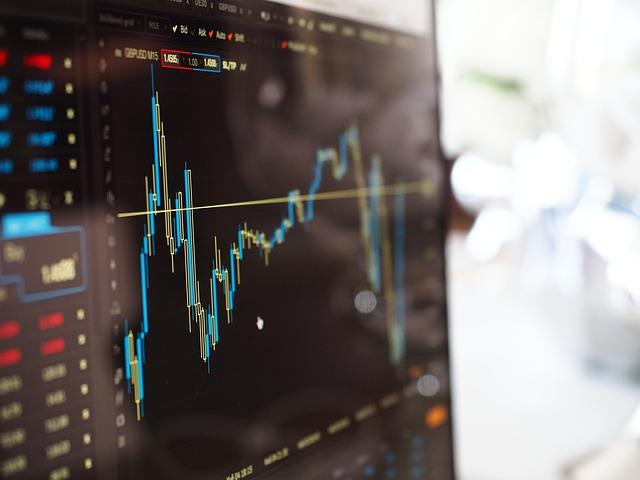if you’ve ever watched a seasoned trader in action and wondered what’s going on inside their head, you’re not alone. Trading isn’t just about charts and numbers—it’s a mindset game. So, how do the pros stay cool, make smart moves, and keep their emotions in check when the market gets crazy? In this post, we’re diving into the secrets of thinking like a trading expert. Whether you’re a newbie or just looking to sharpen your skills, these tips from the pros will help you step up your game and trade smarter, not harder. Ready to unlock the mindset that separates the amateurs from the experts? Let’s get into it!
Understanding Market Psychology Like a Pro
when diving into the world of trading, emotional control can be just as crucial as market knowledge. Successful traders often cultivate a mindset that embraces patience and discipline rather then impulsive reactions. Understanding that losses are part of the game helps keep emotions in check, ensuring decisions come from strategy, not panic or greed. Moreover, recognizing common psychological traps—like fear of missing out (FOMO) or the urge to revenge trade—can dramatically improve your trading consistency. developing a routine that includes thorough analysis, note-keeping, and regular reflection helps turn emotional impulses into calculated moves.
Another key element is mastering the ebb and flow of crowd psychology. Market sentiment influences price movements more than you might realize, and tapping into the collective emotions behind buying and selling can be a major advantage. Consider this fast breakdown:
| Market Sentiment | Typical Trader Behavior | Pro Trader Response |
|---|---|---|
| Extreme Optimism | Buying heavily, risking overexposure | Look for signs of overbought conditions and prepare to take profits |
| Widespread Fear | Selling in panic, exiting positions too early | Identify undervalued assets and consider strategic entry points |
| Uncertainty | Holding back, waiting for clear signals | Set clear criteria for entries/exits to avoid paralysis by analysis |
- Stay objective: Base decisions on data, not headlines.
- Control risk: Use stop losses and position sizing wisely.
- Be adaptable: Markets change—so should your strategy.

Mastering Risk Management to Keep Your Cool
Keeping your emotions in check is what separates a seasoned trader from a gambler. The key lies in having a solid risk management strategy that anticipates potential losses and sets clear boundaries before entering any trade. By defining your maximum acceptable loss upfront, you remove guesswork and avoid impulsive decisions driven by fear or greed. Experts swear by techniques like setting stop-loss orders and applying position sizing tailored to your overall account balance—this way, a single bad trade won’t send you spiraling.
Here’s a quick checklist to help you build a resilient mindset around risk:
- Identify risk per trade: Never risk more than 1-2% of your total capital.
- Use stop-loss orders: automate your exits to prevent emotional panic.
- Plan for different scenarios: Create action plans for both bullish and bearish markets.
- Keep a trading journal: Review your wins and losses regularly to learn and adapt.
| Risk Management Element | Purpose | Pro Tip |
|---|---|---|
| Stop-Loss Order | Limits loss per trade | Place it beyond key support/resistance |
| Position Sizing | Controls exposure | Adjust size based on volatility |
| Risk-Reward Ratio | Ensures profitable trades over time | Aim for at least 1:3 ratio |
| Emotional Check-in | Maintains discipline | pause if feeling overwhelmed |
Spotting Trends Before Everyone Else Does
Staying ahead in trading means catching the *wave* before it builds. One key approach is to immerse yourself in diverse sources of information—not just the mainstream headlines. This includes niche forums, emerging market newsletters, and unconventional data streams like social media sentiment or even option economic indicators. Think of your research as a wide net: the broader and more varied your inputs, the higher the chance you’ll spot early signals others miss. Real experts don’t wait for confirmation; thay act on patterns and whispers.
- Track insider behavior and unusual trading volumes
- Monitor sector rotation and shifting investor focus
- Leverage technical tools like moving average crossovers on lesser-known assets
- Use sentiment analysis tools to gauge crowd psychology in real-time
| Early Indicator | What It Signals | Why It Matters |
|---|---|---|
| Unusual Option Activity | Market expectation shifts | Hints at upcoming volatility or big moves |
| Social Media Buzz | Investor sentiment turning | Precedes rapid trend acceleration |
| Commodity Price Swings | Economic sector stress | Signals early shifts in supply-demand dynamics |
Building a Trading Routine That Works for You
Consistency is the heartbeat of every successful trader. Developing a routine that fits your lifestyle, risk tolerance, and trading goals not only sharpens your focus but also builds confidence over time. Start by carving out dedicated time blocks for market analysis, trade execution, and review. Not all trading days are created equal, so embrace flexibility while maintaining structure—know when to step back and when to dive in. Remember, quality beats quantity when it comes to daily trading activities.
here are a few pro tips to help you tailor a routine that sticks:
- Pre-market prep: Scan news, set alerts, identify key levels.
- Defined trading hours: Avoid impulsive trades outside your peak performance times.
- Post-trade journal: Document wins, losses, and what you learned.
- Regular breaks: Keep your mind fresh and sharp by stepping away periodically.
| Routine Element | Purpose | Time Commitment |
|---|---|---|
| Market Research | Identify setups & trends | 30-45 mins |
| Trade Execution | Place & manage trades | 1-2 hours |
| Review & Journal | Analyse performance | 15-30 mins |
| Mental Reset | Relax & recharge | 10-15 mins |
Learning from Losses and Turning Them Into Wins
Every trader hits rough patches, but what truly sets the pros apart is their mindset when facing those setbacks. Rather than dwelling on losses, expert traders embrace them as powerful learning opportunities. By analyzing what whent wrong without emotional bias, they identify patterns, mistakes, or market conditions that led to the loss, transforming failures into valuable insights for future trades.
Here are some strategies used by seasoned traders to flip the script after a loss:
- Keep a detailed trading journal: Documenting trades helps spot recurring pitfalls.
- Review trades regularly: Scheduled analysis sessions allow adjustment of strategies.
- Adjust risk management: Using position sizing and stop losses based on prior outcomes.
- Stay disciplined: Avoid impulsive “revenge trading” by sticking to the plan.
| Action | Effect |
|---|---|
| Analyze losing trades | Identifies mistakes to avoid |
| Maintain emotional control | Prevents hasty decisions |
| refine entry & exit rules | Improves trade precision |
| Adjust strategy thoughtfully | Enhances adaptability |
Q&A
Q&A: How to Think Like a Trading Expert — Tips from the Pros
Q: What’s the biggest mindset shift I need to make to think like a pro trader?
A: Easy — ditch the idea of “getting rich quick.” Pro traders see trading as a marathon, not a sprint.They focus on consistency, risk management, and learning from each trade rather than chasing huge wins or panicking over losses.
Q: How do pros handle risk differently than newbies?
A: Pros treat risk like a fact of life and plan for it. They never risk more than a small percentage of their capital on a single trade,so one bad move doesn’t tank their entire portfolio.Stop-loss orders and position sizing are their best friends.
Q: What role does emotion play in expert trading?
A: Big one. Pros know emotions can wreck trades, so they stick to their strategies and rules no matter what. They don’t let greed, fear, or hope decide their moves — it’s all about discipline and staying cool under pressure.
Q: How do pro traders stay ahead of the curve?
A: They’re always learning. Markets change, so they read up on news, study charts, and analyze past trades. Staying curious and adaptable is key to staying sharp over the long haul.
Q: Can anyone develop a pro trader mindset, or is it just for the naturally talented?
A: absolutely anyone can — it’s more about habits than talent. With patience,practice,and a willingness to learn from mistakes,you can train yourself to think like an expert trader.
Q: What’s one practical tip to start thinking like a trading pro today?
A: Start journaling your trades. Write down why you entered, your plan, how you felt, and what happened. Over time, this helps you spot patterns, avoid repeating mistakes, and build solid trading habits.
Thinking like a trading expert isn’t about magic formulas or insider tips — it’s about mindset, discipline, and a willingness to learn. Keep these pro tips in mind, and you’ll be trading smarter before you know it!
Insights and Conclusions
There you have it — some insider tips to help you start thinking like a trading pro. Remember, it’s not just about crunching numbers or following charts; it’s about mindset, discipline, and staying curious. The experts didn’t get there overnight,and neither will you. But with practice, patience, and a sprinkle of these strategies, you’ll be sharpening your trading game in no time. So, keep learning, stay cool under pressure, and most importantly, enjoy the ride.Happy trading!











